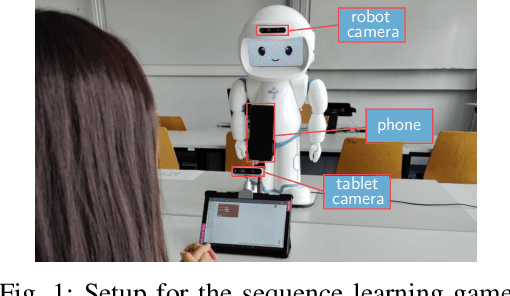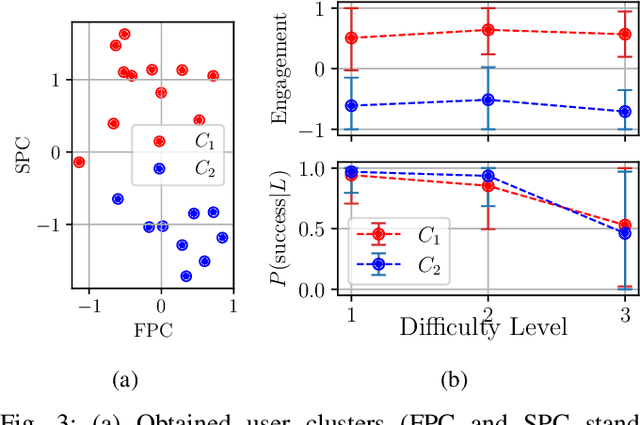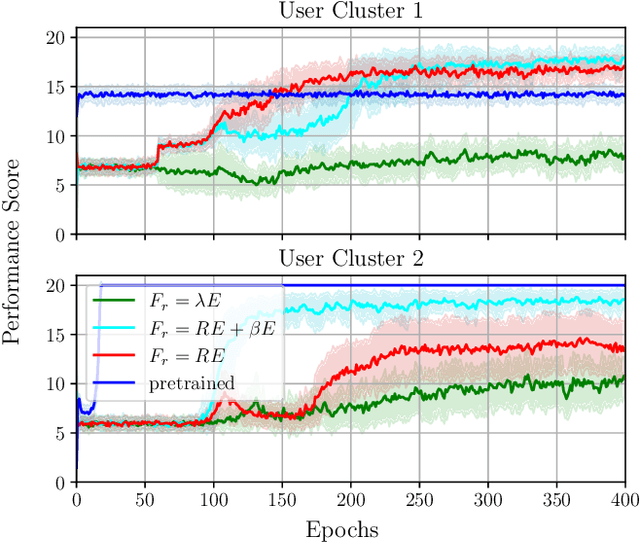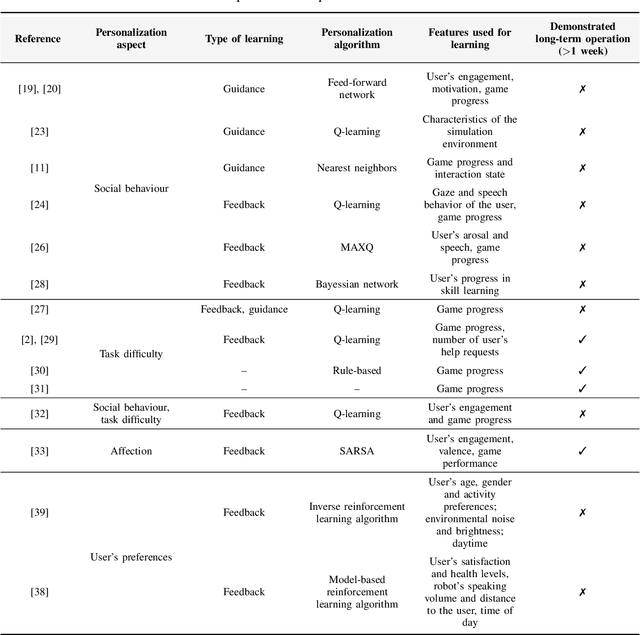Michał Stolarz
Personalised Robot Behaviour Modelling for Robot-Assisted Therapy in the Context of Autism Spectrum Disorder
Jul 25, 2022



Abstract:In robot-assisted therapy for individuals with Autism Spectrum Disorder, the workload of therapists during a therapeutic session is increased if they have to control the robot manually. To allow therapists to focus on the interaction with the person instead, the robot should be more autonomous, namely it should be able to interpret the person's state and continuously adapt its actions according to their behaviour. In this paper, we develop a personalised robot behaviour model that can be used in the robot decision-making process during an activity; this behaviour model is trained with the help of a user model that has been learned from real interaction data. We use Q-learning for this task, such that the results demonstrate that the policy requires about 10,000 iterations to converge. We thus investigate policy transfer for improving the convergence speed; we show that this is a feasible solution, but an inappropriate initial policy can lead to a suboptimal final return.
Personalized Behaviour Models: A Survey Focusing on Autism Therapy Applications
May 18, 2022

Abstract:Children with Autism Spectrum Disorder find robots easier to communicate with than humans. Thus, robots have been introduced in autism therapies. However, due to the environmental complexity, the used robots often have to be controlled manually. This is a significant drawback of such systems and it is required to make them more autonomous. In particular, the robot should interpret the child's state and continuously adapt its actions according to the behaviour of the child under therapy. This survey elaborates on different forms of personalized robot behaviour models. Various approaches from the field of Human-Robot Interaction, as well as Child-Robot Interaction, are discussed. The aim is to compare them in terms of their deficits, feasibility in real scenarios, and potential usability for autism-specific Robot-Assisted Therapy. The general challenge for algorithms based on which the robot learns proper interaction strategies during therapeutic games is to increase the robot's autonomy, thereby providing a basis for a robot's decision-making.
 Add to Chrome
Add to Chrome Add to Firefox
Add to Firefox Add to Edge
Add to Edge